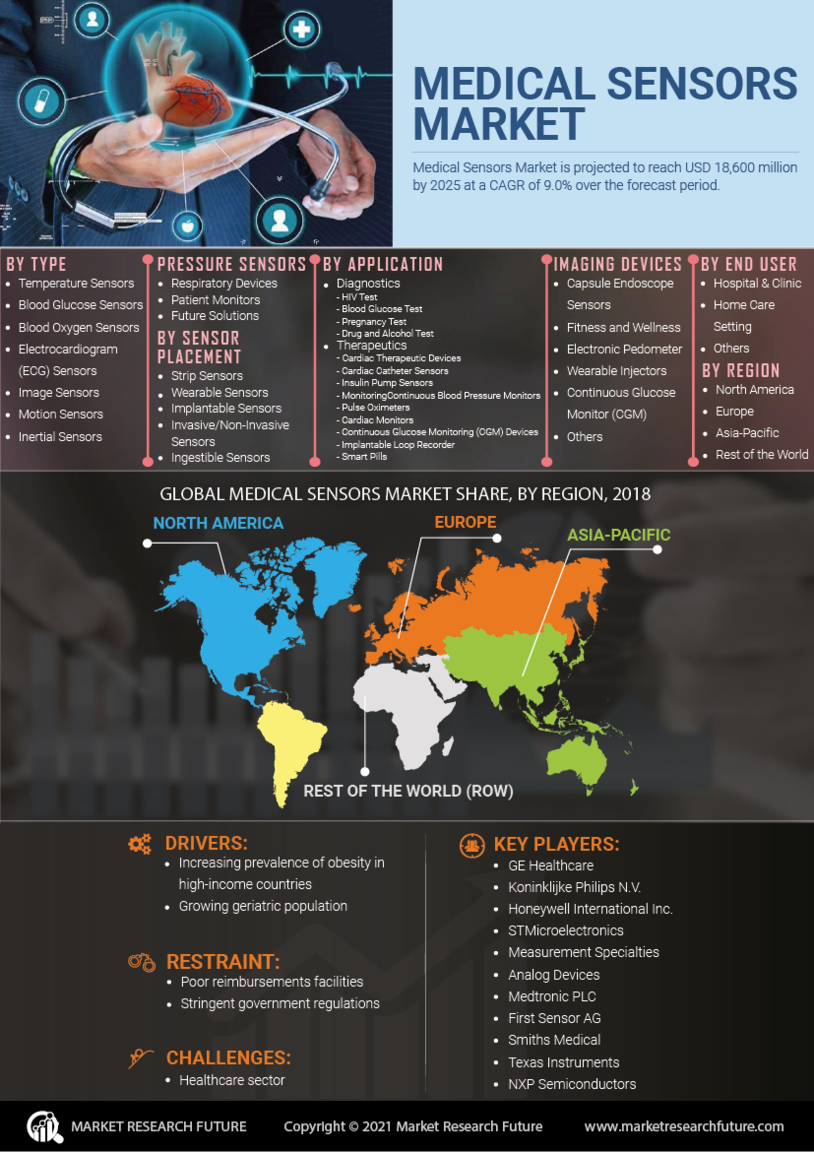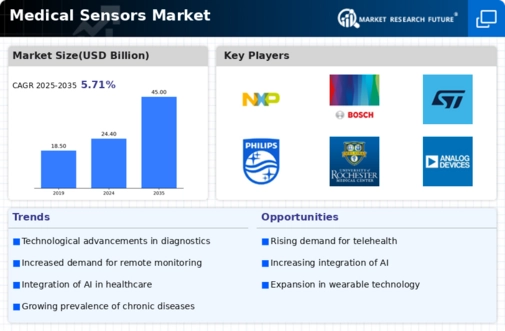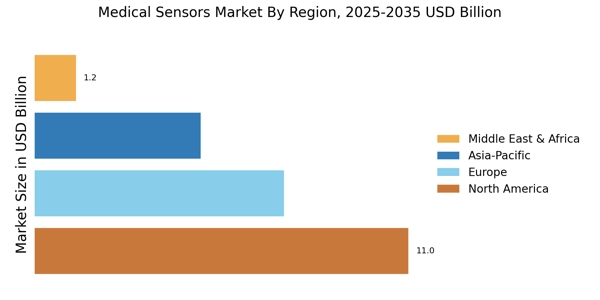Rising Incidence of Chronic Diseases
The Medical Sensors Market is propelled by the increasing prevalence of chronic diseases such as diabetes, cardiovascular disorders, and respiratory conditions. As the global population ages, the burden of these diseases is expected to rise, necessitating continuous monitoring and management. Medical sensors play a pivotal role in this context, providing real-time data that aids in timely interventions. The market for chronic disease management sensors is projected to grow at a rate of 18% over the next five years, reflecting the urgent need for effective monitoring solutions in the healthcare sector.
Increased Focus on Preventive Healthcare
The Medical Sensors Market is significantly influenced by the growing emphasis on preventive healthcare. As healthcare systems shift from reactive to proactive approaches, the demand for sensors that can monitor health metrics in real-time is rising. This shift is likely to result in a market expansion, with preventive health sensors projected to grow by 20% annually. The integration of these sensors into everyday life, such as fitness trackers and smartwatches, is indicative of a broader trend towards health awareness and self-monitoring, which is reshaping the landscape of healthcare.
Regulatory Support for Medical Innovations
The Medical Sensors Market benefits from supportive regulatory frameworks that encourage innovation and the adoption of new technologies. Regulatory bodies are increasingly streamlining the approval processes for medical devices, including sensors, which facilitates quicker market entry for innovative products. This regulatory support is crucial as it fosters an environment conducive to research and development. The market is expected to see a rise in new entrants, with an estimated 15% increase in sensor-related innovations over the next few years, driven by favorable policies and funding opportunities.
Growing Demand for Home Healthcare Solutions
The Medical Sensors Market is witnessing a surge in demand for home healthcare solutions, driven by an aging population and a preference for at-home care. As more patients seek to manage chronic conditions from the comfort of their homes, the need for reliable medical sensors has escalated. This trend is reflected in the increasing sales of wearable devices, which are expected to account for a significant portion of the market. By 2025, the home healthcare segment is anticipated to grow at a rate of 12%, highlighting the potential for medical sensors that facilitate remote monitoring and patient engagement.
Technological Advancements in Medical Sensors
The Medical Sensors Market is experiencing rapid technological advancements that enhance the functionality and accuracy of sensors. Innovations such as miniaturization, improved data analytics, and integration with mobile devices are driving growth. For instance, the introduction of advanced biosensors has led to more precise monitoring of vital signs, which is crucial for patient care. The market is projected to reach a valuation of approximately 30 billion USD by 2026, indicating a compound annual growth rate of around 10%. These advancements not only improve patient outcomes but also increase the demand for sophisticated medical sensors across various healthcare settings.


















Leave a Comment